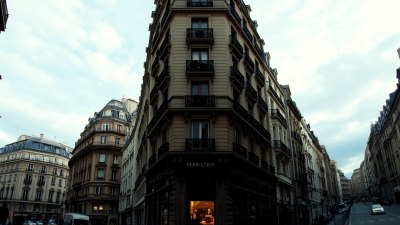The Mystery of Hotel Curtains: Why They Never Fully Close
Discover the intriguing design choices behind hotel curtains and their peculiar inability to fully close.

When checking into a hotel room, you may have noticed a peculiar feature of the curtains: they never quite close completely. This design detail has puzzled many travelers and has sparked discussions regarding its purpose. Understanding the rationale behind hotel curtains can unveil a fascinating interplay of aesthetics, practicality, and guest experience.
The primary reason hotel curtains often don’t fully close is to enhance the overall guest experience. Most hotels aim to provide a welcoming ambiance that promotes relaxation and comfort. Fully closing curtains can create a dark and claustrophobic environment that some guests find uninviting. Instead, curtains that leave a few inches of light exposure can help create a soothing atmosphere while allowing natural light to filter in. This is especially relevant in hotels situated in picturesque locations, where a view can significantly enhance a guest's experience.
Another factor to consider is the design philosophy of many hotels. Hotels are often designed with aesthetics in mind, and curtain design is no exception. Architects and interior designers work to create a cohesive look that reflects the hotel’s brand and theme. For hotels that aim for a modern, open feel, curtains that don’t fully close may play into this vision. They contribute to an airy, spacious look that encourages guests to feel at home while also showcasing any spectacular views the hotel room may offer.
Further, the functionality of curtains within a hotel room is dictated by the balance between privacy and openness. While guests desire privacy, they also appreciate the ability to enjoy natural light and see outside. Curtains that do not fully close allow guests some degree of privacy from prying eyes while still letting in light. This balance is particularly important for hotels located in urban areas where close proximity to other buildings can make guests feel vulnerable. Curtain designs that cater to this need are intentional choices made by designers to promote comfort without compromising on practical needs.
Additionally, many hotel curtains are designed to serve multiple purposes. Beyond merely blocking out light, they may also assist with sound insulation and temperature control. Curtains that do not close all the way can provide moderate light blockage while also allowing for air circulation, which can help regulate the temperature within the room. This is particularly important in climates where overheating can be a concern. In essence, a room that can maintain a comfortable environment naturally enhances guest satisfaction.
Another compelling reasoning behind the design of hotel curtains involves maintenance and longevity. Hotels are high-traffic environments where durability is vital. Curtains that are constructed to withstand consistent use and cleaning are preferable. If curtains are designed to fold neatly and close fully, they may require more upkeep and could wear out more quickly. A design that allows for partial closure may help in reducing the wear and tear that could accumulate on the fabric over time.
A psychological perspective also plays a role in understanding the function of hotel curtains. The feeling of openness created by curtains that do not fully close can add to the overall ambiance of relaxation and tranquility. When guests enter their rooms, they often seek a sense of calm and security. Curtains that are partially open can evoke feelings of safety while also allowing for the engaging natural light that is associated with comfort. This psychological impact can be quite significant in the hospitality industry, where guest satisfaction can greatly affect reviews and return visits.
Historical Insight into Curtain Designs
The curtain situation in hotels is not a recent phenomenon. Historically, curtains have served as both decoration and a means of regulating light and privacy in various settings. In ancient Rome, for instance, heavy draping fabrics were common, offering seclusion from the outside world while simultaneously allowing airflow and light. Over time, as architectural styles evolved, so did the types of window treatments used in hotels. The trend towards modern design favored lighter and more elegant solutions, leading to the curtain designs we see today.
The evolution of hotel interiors reflects broader changes in societal preferences and cultures. As people began to value experiences more than possessions, hotels adjusted their designs to accommodate this shift. The interplay between openness and privacy in hotel curtains mirrors this larger trend within the hospitality industry towards creating shared, communal experiences. A hotel room is no longer merely a place to sleep; it is part of a curated experience, one that necessitates thoughtful design down to the finest details, such as curtain placement.
Guest Expectations and Preferences
As a guest in a hotel, your expectations should ideally shape the choices that are made regarding elements like curtaining. What do guests want? Comfort, privacy, and aesthetics are usually high on the list. Although many guests appreciate rooms that are bright and airy, there are also those who prefer rooms to be darkened entirely during their stay. This contrasts some guests' needs and emphasizes the importance of catering to a range of preferences. Half-close curtains may be a compromise meant to satisfy the largest number of guests within a particular demographic.
Also, some hotels may take into account the local culture or geographical location when considering curtain design. For instance, establishments in sunny locales may prefer open curtains that allow bright light while offering a view of the beach or mountains. Conversely, hotels in darker, more urban regions may need to balance aesthetics with the need to block out nighttime urban lighting while still being welcoming. The balance between these factors is crucial for hotel managers aiming to attract and retain a varied clientele.
The rise of reviews and social media has introduced another layer to the curtain mystery. Guests frequently post images of their hotel environments, and a well-designed room can lead to social media-worthy content. As such, hotels are likely more conscious about the visual appeal of their curtains and, by extension, their overall designs. Visually striking curtains that do not fully close could enhance the aesthetic of a guest’s snapshot, promoting the hotel in unintentional yet valuable marketing.
Conclusion
So, the next time you step into a hotel room and observe the curtains unable to completely close, remember that this detail is far from random. The functionality, maintenance, aesthetics, and the overarching guest experience converge to create a unique solution that reflects modern expectations in hospitality. These elements combined signify that hotel curtains are a vital component in establishing an inviting and comfortable environment, catering to the needs of diverse guests while promoting an experience synonymous with relaxation and comfort. The interplay between design choices and the psychological aspects of comfort ultimately enhances the experience hotels aim to deliver, making curtains much more than mere decoration.











